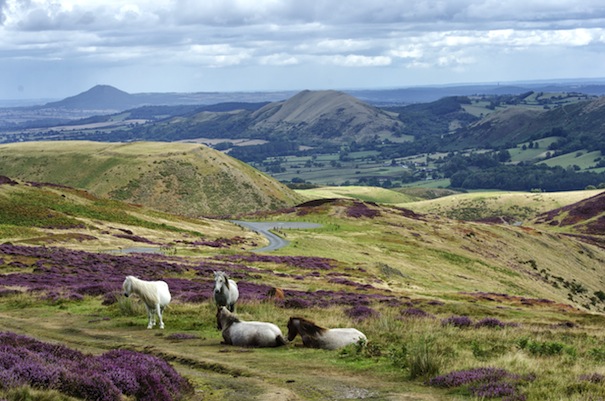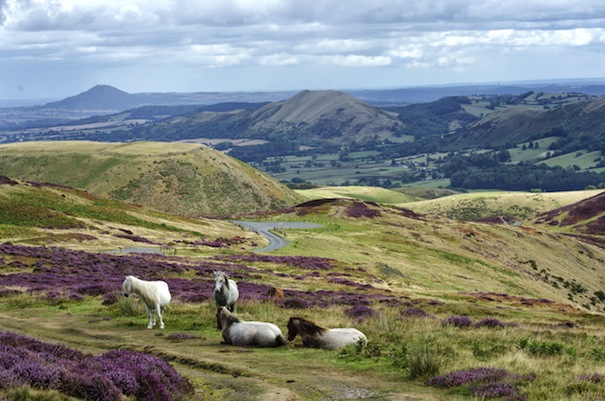
Stephen Roberts explores the hills and valleys or our own ‘Little Switzerland’ – Church Stretton.
On Shropshire’s western borders, it’s hard to tell exactly where Wales ends and England begins. Old battle scars have healed along the boundary of Offa’s Dyke, and the much fought over dividing line is worth exploring today.
My wife and I had the good fortune to spend a week in Church Stretton, a small town with satisfying spa feel. From here, we explored once volatile lands where two countries appear to merge.
This market town lies halfway between Shrewsbury and Ludlow, within the Shropshire Hills Area of Outstanding Natural Beauty. The Long Mynd looms imposingly immediately to the west and the Stretton Hills to the east, with the town nestling between. ‘Stretton’ comes from old English words denoting Roman road and settlement.
A rhapsody in purple
Undoubtedly the most dramatic feature here is the Long Mynd, the majestic heather-covered hill which glowers behind the town and is a blaze of purple in late summer. It is 10 miles long, two to four miles wide and, at its highest, 1,700 feet. You can drive up some of it, but the only respectable way to tackle the ‘Mynd’ is on foot, and the extra effort is rewarded by breathtaking views of truly wild scenery.
The Long Mynd is owned and managed by the National Trust and the public can roam at will, although it is considerate to stick to the paths in an environment where the rocks such as the Stiperstones are said to be amongst the oldest in the UK and possibly even the world, at more than 560 million years. There is also much human antiquity here, with an Iron Age hill fort at Bodbury Hill, ancient barrows dotted around, and a 5,000 year old trackway, the Portway, running the length of the Mynd. Another ancient route, the Burway, crosses the Mynd and is the county’s highest public road – not to be tackled in the snow…
The western side of the Mynd is a steep escarpment (favoured by hang-gliders who set off from the glider station to share the thermals with buzzards), but the east side has thrown out huge outcrops divided by steep, narrow valleys.
Our holiday cottage was perched on the east of the Mynd overlooking the town in one such valley, with a footpath running from the back gate down into the beautiful Carding Mill Valley. There are similar valleys – Ashes Hollow and Callow Hollow both have streams, and a waterfall in the latter’s case, but Carding Mill is the jewel, complete with a reservoir surrounded by hills, which was apparently once the site of an open-air swimming pool.
Carding Mill Valley has a historical name, for ‘carding’ refers to the process of untangling fibres from raw materials as part of the cloth-making process –usually the work of children – and there was a textile mill here from the 18th century until the start of the 20th. The valley may have lost its industry, but it is still busy as a starting-point for walkers tackling the Mynd.
There’s a famous golf course amongst the hills, which competes with one in Kington, Herefordshire, to claim the title of England’s highest, much above 1,200 feet and enjoying superb views.
As well as the Mynd, are seven Caradoc hills including Caer Caradoc, the highest at 1,500 feet, which is named after Caractacus, who built a fort here to repel the Romans when this wild territory was the subject of dispute.
Though it’s the hills that attract most of the tourists, as a town Church Stretton is delightful. It became fashionable towards the end of the 19th century and much of its architecture dates from the time when the late Victorians and Edwardians flocked here for the picturesque landscape and bracing air, earning it the moniker ‘Little Switzerland’. Church Stretton is a ‘Walkers Are Welcome’ town and natural springs supply Stretton Hills water – so it retains its healthy appeal right up to the present day.






